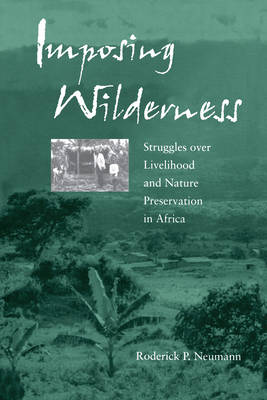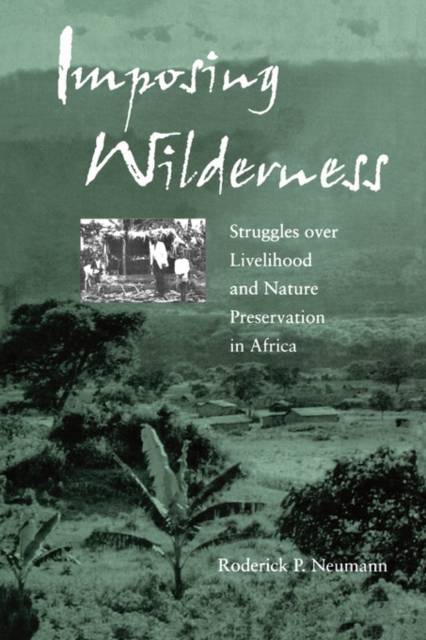
- Afhalen na 1 uur in een winkel met voorraad
- Gratis thuislevering in België vanaf € 30
- Ruim aanbod met 7 miljoen producten
- Afhalen na 1 uur in een winkel met voorraad
- Gratis thuislevering in België vanaf € 30
- Ruim aanbod met 7 miljoen producten
Zoeken
Imposing Wilderness
Struggles Over Livelihood and Nature Preservation in Africa Volume 4
Roderick P Neumann
€ 59,45
+ 118 punten
Omschrijving
Arusha National Park in northern Tanzania, known for its scenic beauty, is also a battleground. Roderick Neumann's illuminating analysis shows how this park embodies all the political-ecological dilemmas facing protected areas throughout Africa. The roots of the ongoing struggle between the park on Mount Meru and the neighboring Meru peasant communities go much deeper, in Neumann's view, than the issues of poverty, population growth, and ignorance usually cited. These conflicts reflect differences that go back to the beginning of colonial rule. By imposing a European ideal of pristine wilderness, Neumann says, the establishment of national parks and protected areas displaced African meanings as well as material access to the land. He focuses on the symbolic importance of natural landscapes among various social groups in this setting and how it relates to conflicts between peasant communities and the state.
Specificaties
Betrokkenen
- Auteur(s):
- Uitgeverij:
Inhoud
- Aantal bladzijden:
- 271
- Taal:
- Engels
- Reeks:
- Reeksnummer:
- nr. 4
Eigenschappen
- Productcode (EAN):
- 9780520234680
- Verschijningsdatum:
- 23/01/2002
- Uitvoering:
- Paperback
- Formaat:
- Trade paperback (VS)
- Afmetingen:
- 154 mm x 230 mm
- Gewicht:
- 367 g

Alleen bij Standaard Boekhandel
+ 118 punten op je klantenkaart van Standaard Boekhandel
Beoordelingen
We publiceren alleen reviews die voldoen aan de voorwaarden voor reviews. Bekijk onze voorwaarden voor reviews.











